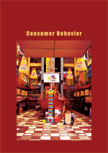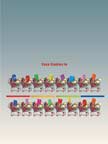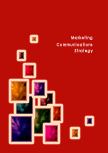Consumers Behavior
 |
Details
Chapter Code: CBC13
Textbook:
210 X 275 mm approx.
Short Case Studies
Detail Table of Contents
Workbook:
Pages : 304; Paperback;
210 X 275 mm approx
Pricing
Textbook Price: Rs. 750;
Workbook Price: Rs. 700;
Shipping & Handling Charges: Rs. 50 per book;
Books Available only in INDIA
Chapter Price : Rs. 100
To download this chapter in electronic format, click on the button below,
and select the chapter from the list of available chapters.
Buy Now
To order the entire book click on the button below, and select the book from
the list of available books:
Please allow 5 to 10 days for delivery of the
Book.
Consumer Behavior : Chapter 13
SUMMARY:
Consumers make numerous decisions everyday; sometimes even when they are not consciously aware of how and why they have made a choice. The consumer as a decision maker is viewed in different ways by different groups of researchers. The economic view holds that consumers are rational decision makers, while some other researchers view the consumers as uninvolved, passive decision makers.
|
|
There are three phases in consumer decision making process - problem recognition, information search, and alternatives evaluation and selection. Problem recognition is initiated with identification of a gap in the actual state and the desired state as perceived by the consumer. The consumer may be aware or unaware of the problem or need.
The need awareness can trigger through non-marketing and/or marketing triggers. Marketing triggers involve identifying consumer problems through various techniques and then acting on these. Marketers may also try to suppress problem recognition by consumers for products like cigarettes, alcohol, etc.
Information search is initially done from internal sources, i.e., memory and experience, and then from external sources, i.e., friends, internet, etc. Consumer decision making involves seeking information on three important aspects of product
- evaluation criteria, alternatives available, and attributes of each alternatives. The amount of external search to be done depends on various market, product, consumer, and situational variables.
Alternatives evaluation and selection involves making the brand choice after evaluating all the alternatives. There are three types of consumer choice processes
- affective choice (based on 'it feels right' factor), attitude-based choice (based on decision rules), and attribute-based choice (based on attribute-by-attribute comparison across brands).
There are three important models which explain consumer decision making - the Howard-Sheth model of buying behavior, the Nicosia model, and the Engel-Blackwell-Miniard (EBM) model. The Howard-Sheth model of buying behavior attempts to explain the complexity of the consumer decision making process in case of incomplete information. However, is quite complex and difficult to understand.
The Nicosia model explains the consumers' buying behavior from the marketers' perspective. However, it fails to explain in detail the firm's and consumer's attributes and doesn't take into account that consumer might already be having a predisposition with respect to a particular product/brand.
The Engel-Blackwell-Miniard model assumes that the consumer approach is that of problem-solving. It, however, lacks clarity regarding the influence of individual and environmental variables on consumer decision making.



